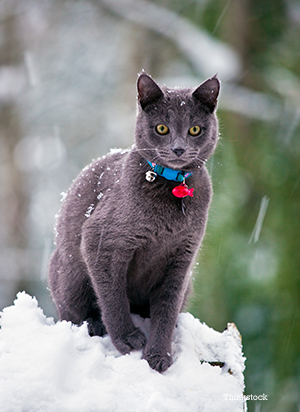
Overview
Snow and cold can be just as difficult for our furry friends as it can be for us! “Frostbite” refers to the damage of body tissue that has been exposed to freezing temperatures for an extended period of time. In addition to hypothermia (low body temperature), all warm-blooded creatures—including dogs and cats—can fall victim to the damaging effects of frostbite when exposed to low temperatures.
In cats and dogs, the feet, tail, and ears are at highest risk for injury because of reduced blood flow to those parts of the body. When a dog or cat becomes cold, the body reduces its flow of blood to the extremities; this is the body’s way of protecting the main internal organs by conserving blood for their use. Although generally not life-threatening on its own, frostbite can result in scarring, infection, and, in worst cases, the need for amputation of the affected area(s).
Symptoms
Not always immediately detectable, it can sometimes take several days before signs of frostbite are noticeable. It is very important to keep an eye out for any detectable pain, discoloration, swelling, blistering, and/or sloughing (peeling) of the skin on the feet, tail, and ears. If any of these signs are present, you should contact your veterinarian for further treatment. Redness following rewarming is normal, but if the areas become darker, instead, you should contact your veterinarian immediately.
Treatment
If your pet has been exposed to extremely low temperatures and frostbite is a possibility, you should contact your veterinarian immediately. Treatment for minor frostbite includes slowly warming up your pet by gently applying warm (not hot) towels or blankets to the affected areas of her body, taking care not to rub or squeeze hard. Additionally, your veterinarian mayrecommend placing affected body parts in lukewarm water to rewarm the areas, as well.
Prevention
Reducing the risk of frostbite is easy! Be sure to never leave your pet unattended for long periods of time, especially when outdoors in the coldest months.
If you have any questions or concerns, you should always visit or call your veterinarian – they are your best resource to ensure the health and well-being of your pets.
